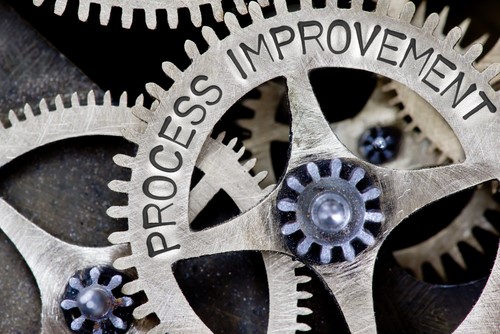
I am truly fortunate that my current role gives me the opportunity to collaborate with some of the most talented leaders across a wide range of industries in the middle market. Our discussions typically center around People, Process, and Technology. Most business leaders value their people and understand the importance of technology, but are hazy when it comes to an understanding of the impact great processes can provide an organization. Our conversations usually begin with an assumption that people or technology challenges exist. Rarely is process mentioned, however, often it is the cause of the issues. After discovering this, I will respond, “Can you walk me through the process so that I can identify the breakdown?” That is when the conversation starts to stammer and slow down. The typical response I get is something like this, “We just implemented new technology or hired an impact team member that is going to solve all our issues.
Below are 5 of the costliest misperceptions about processes I encounter on an ongoing basis:
- Technology is a substitute for process
I hear this the most often. Leaders are made to believe by software sales people that “our software will eliminate the need for process.” The good software may reduce the number of steps in a process, but it never eliminates the need for a documented step by step process. The key point with technology is to include and review your organization’s processes in the development phase. This way your processes are embedded in the software and are intuitive to your team. It may cost a few upfront dollars in customization but eliminates the constant “work around” that teams come up with to deliver the desired outcome.
- Process is a one and done event
Great processes develop over time. Processes are like professional athletes, practice, make some adjustments, practice again, make some more adjustments. Great athletes never stop practicing and making adjustments. Great processes are no different. A process is established; people execute the process; the customer generates ideas for improvement, and associate feedback or the organization’s business needs change requiring a change. Evolving processes will never stop, and this can become your competitive advantage. Your company’s products and services will always stay current and most importantly meet your customers evolving needs.
Steve Jobs – “You can’t just ask customers what they want and then try to give that to them. By the time you get it built, they’ll want something new.”
- Processes can’t be established in a vacuum
Leaders often want to limit the group to senior leadership only. This is a big misstep. The development and design of a great process must include a cross section of senior leaders, field leaders, front line leaders and in some cases key customers and strategic supplier partners. This is where the buy-in begins by having a cross section of team members and partners collaborate. This will go a long way in creating a process that encompasses all team member’s and customer’s needs. This is where the grass roots of best practices can be unearthed. Who better to build process than team members that are the closest to an organizations customer base. In some cases, it would be wise to include key customers and strategic supplier partners in the development of processes. Some organizations are tentative to include customers or strategic supplier partners in the process, but in the right environment, the positive outcomes outweigh the potential pitfalls.
- My team or organization does not have time or the money
All organizations must make the time to fix or upgrade processes if they wish to continue a growth trajectory. Companies experience acquisitions, market turmoil, leadership and associate turnover, on an ongoing basis. Leaders often fail to add up the cost of doing nothing. For example, a recent engagement, a valued client completed two acquisitions over the last three years but failed to make time or allocate the funds for integrating the inventory process during the acquisition phase. Fast forward three years later, the start of my engagement; inventory variances soared 300%, SKU’s increased by 2500, product expired leading to a loss of over $300,000.00 in their product, on and on. I know my valued client will make the time and allocate the funds to create an integrated inventory process when they make their next acquisition. The compound cost of doing nothing is extremely high requires more time and funds to unwind the mess that has been created.
- Now that we have created a great process, we are well on our way of eliminating our problems
Great processes require practice and adjustments. Many organizations and leaders feel the work is done once they communicate a new process and let it go. When implementing a process, there must be a designated team member to champion the cause. Give them the autonomy and latitude to hold everyone accountable, so it has time to take root. All good processes must be repeatable and need to be consistently executed. To achieve this, the champion will need to set up a communication protocol, training for the new process, a protocol for the customer and associate feedback and measure the results to ensure repeatability and consistency are being achieved.
- Edwards Deming – “Eight-five percent of the reasons for failure are deficiencies in the systems and process rather than the employee. The role of management is to change the process rather than badgering the individuals to do better.”
The bottom line is effective processes that are coupled with great people and technology will accelerate growth and profitability.
Want to discuss this topic further? Question/Comment? Feel free to reach out to me at (610) 314-9199 or clee@thinkempirical.com.



